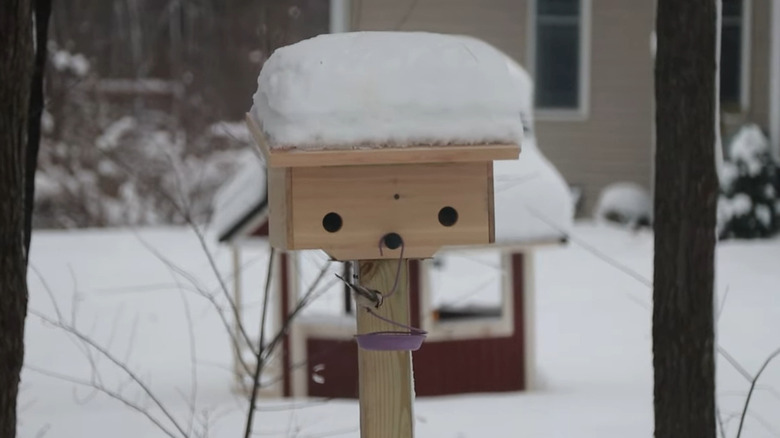Keep Birds Visiting Your Yard During Winter With A Roosting Box
We may receive a commission on purchases made from links.
Birds of various sizes and colors flocking to your yard may be a common sight in the spring and summer, but what about the winter? Around 75% of birds in North America migrate for the winter, yet you may still see a few non-migratory species flitting in your area. These birds, such as the Northern Cardinal, are "resident birds," which remain year-round, unlike other feathered friends. Resident birds don't migrate because they're able to find sufficient food during the winter. Inclement conditions, such as snow and ice, however, make it harder for them to find food, so you won't necessarily see them as much as you do in the spring. One way to attract birds to your yard this winter season is to offer a roosting box for their comfort. A roosting box offers protection from predators and the weather, providing shelter to visiting birds.
Although the names are sometimes used interchangeably, a nesting box and roosting box are not the same. Roosting boxes give birds somewhere warm to visit during the winter, and it's not uncommon to see various bird types share the space. Nesting boxes are often meant as a space for birds to mate and have their young. A bird may roost in the nest box during winter, however, the roosting box design is more suitable for keeping warm as it features less ventilation, keeping heat inside. Using a roosting box also allows multiple birds to seek warmth thanks to its several perches, whereas nest boxes are empty and perchless.
Setting up a roost box for the birds
Roosting boxes are sold in various feed stores and you can also purchase one online, such as the convertible winter roost by Coveside. When browsing online options, read the product description and title carefully to ensure you don't buy a simple birdhouse, as these are not made for insulation.
If you have basic carpentry skills, you can make your own backyard roosting box, just as you would build a charming DIY birdhouse, with multiple panels of cedar plank, some dowels, and wood screws. You'll want to drill a hole 1 ½ inches wide at the bottom of the front panel for easy entrance. A larger hole of 2 inches is also fine, but anything over 2 inches increases the risk of aggressive birds, such as starlings, entering the box. You can typically find instructions for a DIY shelter from your local Audubon Society chapter or by viewing a tutorial on YouTube.
Once you have the winter shelter, mount it on a tall, sturdy post, preferably six to 15 feet from the ground. Give your future occupants warmth and make the interior more comfortable with insulation like mulch chips or dried grass. For the finishing touch for avian visitors, add a well-stocked bird feeder and waterer nearby so birds can refuel as needed, plus cover the bird feeder to protect the food before a winter snowstorm hits. Clean your roosting box regularly to remove any buildup.

